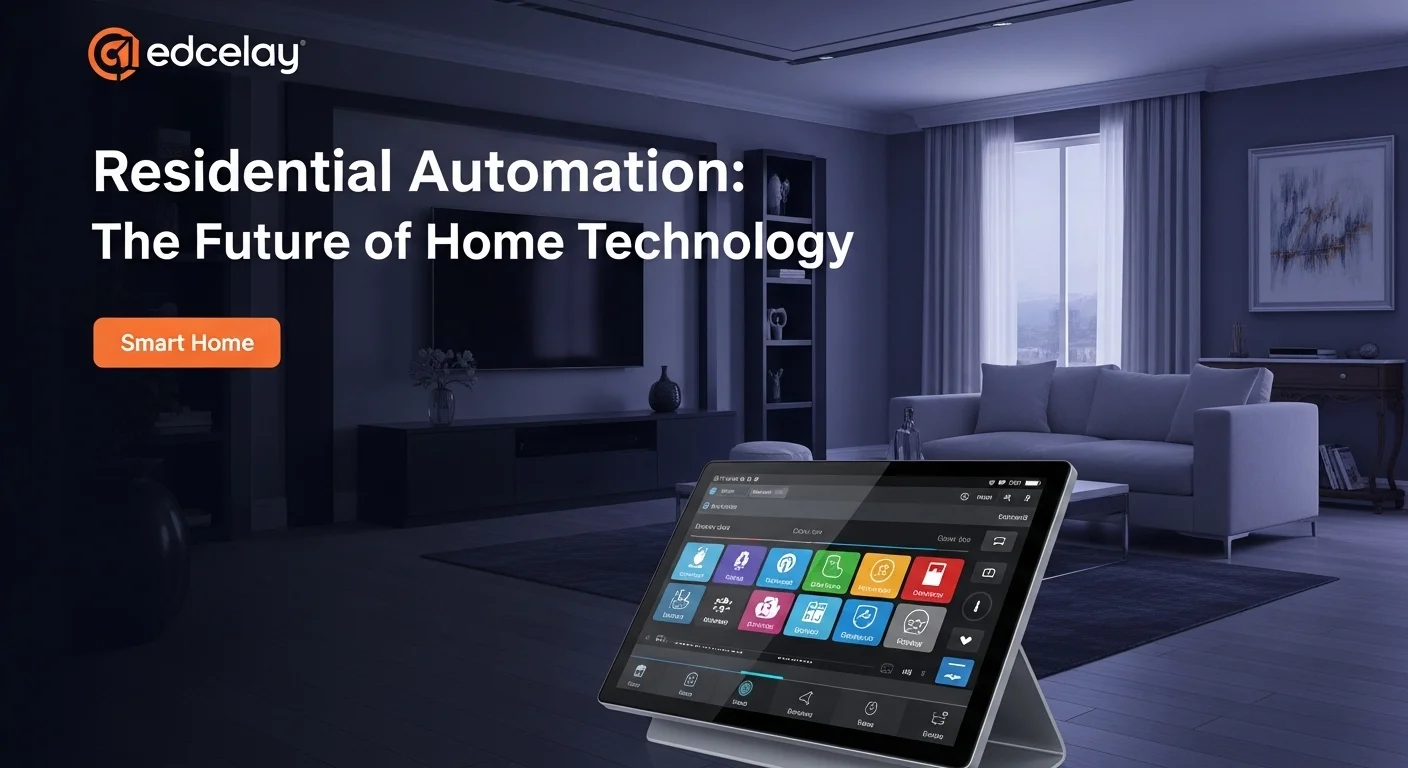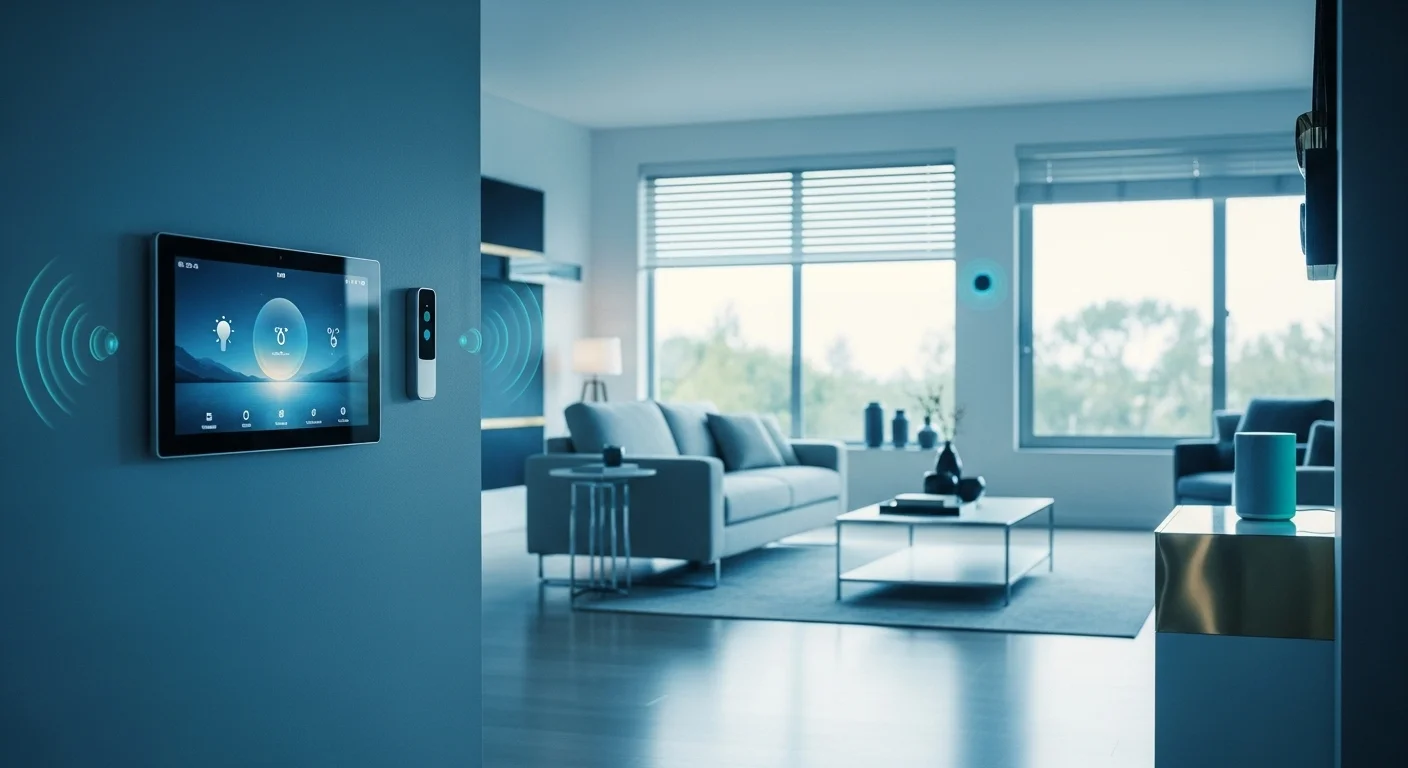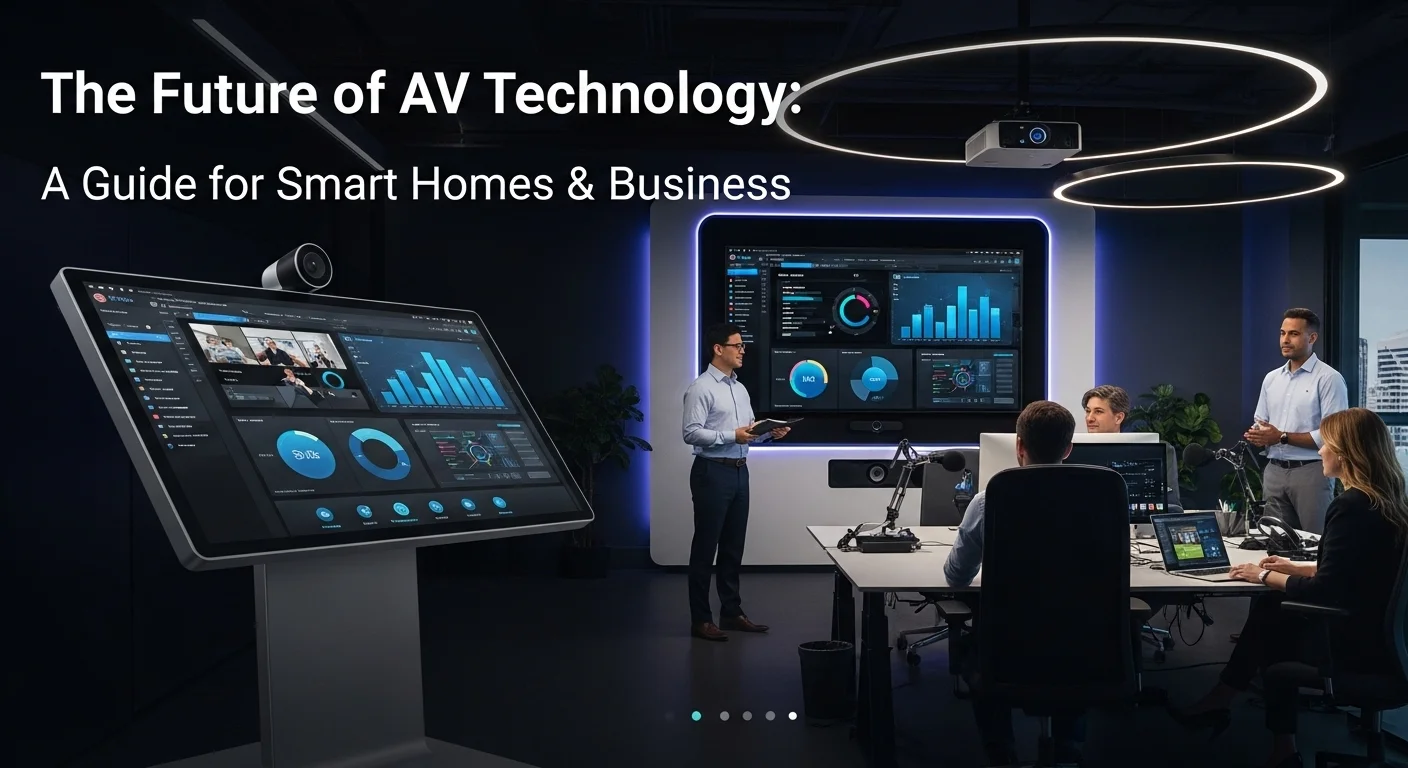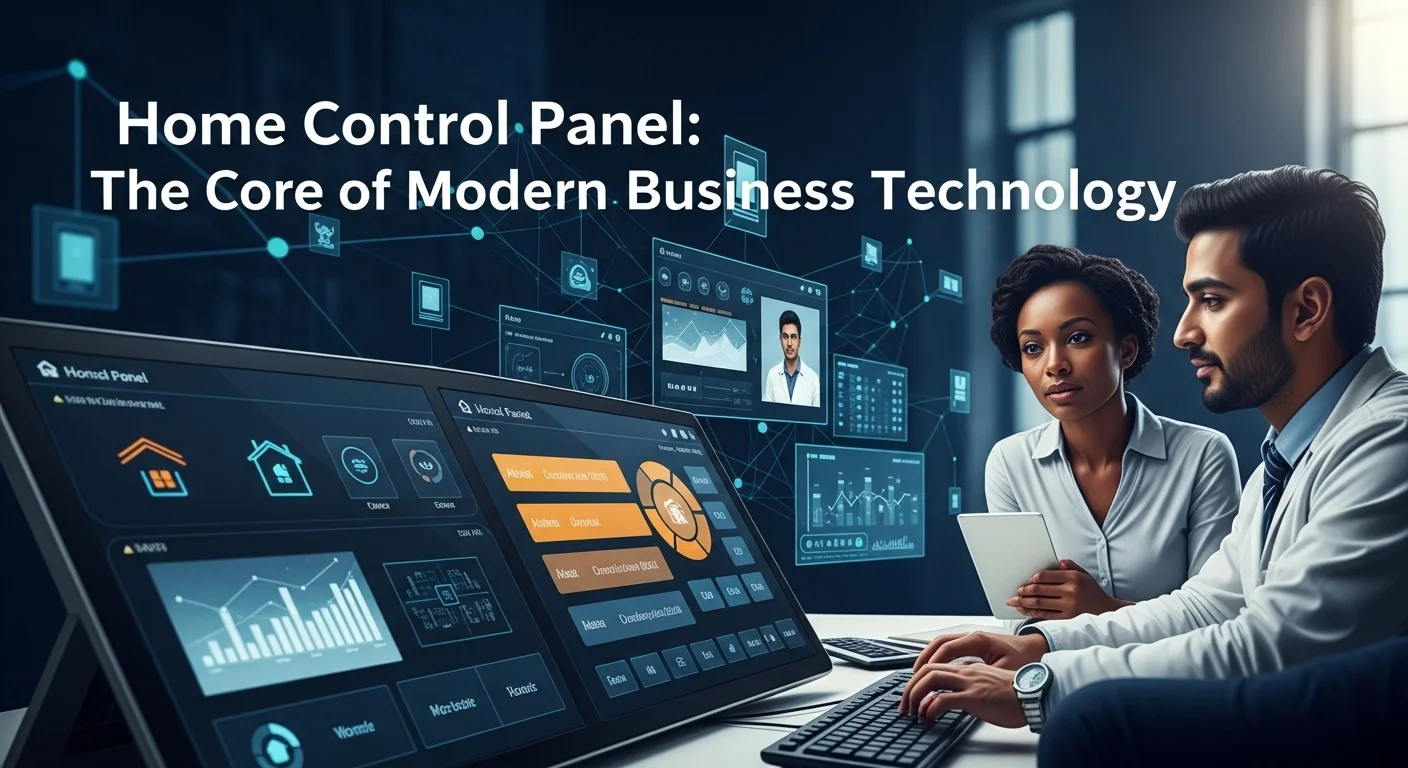Your Smart Home Journey: A Real-World Guide to Home Automation

Executive Summary
I still remember my first 'smart' device—a single lightbulb I could control with my phone. It felt like magic, and it sent me down a rabbit hole that became my career. That simple start blossomed into a deep understanding of what we call residential automation, or more simply, the smart home. This isn't just about gadgets; it's a revolution in how we live, creating incredible opportunities for businesses and tech lovers alike. In this guide, I'll share my journey and break down what a truly automated home looks like, from the basics of smart lighting to the complex systems reshaping industries like real estate and healthcare. We'll explore the tech that makes it all tick, the business potential, the challenges, and what's coming next. This is the essential guide I wish I'd had when I started, perfect for anyone looking to invest in or simply understand the future of smart living.
Table of Contents
So, What Exactly Is a Smart Home?
Let's be honest, the term 'residential automation' sounds a bit robotic. I prefer 'smart home' because that's what it's really about: making your home work smarter *for you*. At its heart, a home uses technology to automate and control things like your lights, thermostat, entertainment systems, and security. [1, 2] This has gone from something you'd see in a sci-fi movie to a very real, and increasingly affordable, part of modern life. For me, its importance in technology is clear: it’s where cutting-edge innovations like the Internet of Things (IoT) and AI come out of the lab and into our daily routines, making life easier, safer, and more efficient.
A complete smart home system is more than just a pile of remote-controlled gadgets; it's a team of devices that all talk to each other. [35] I often explain it to my clients using a simple analogy of the human body. You have three main parts:
- Sensors (The Senses): These devices gather information. A motion sensor 'sees' movement, a temperature sensor 'feels' the heat, and a door sensor 'knows' if it's open or closed. [21]
- Controllers/Hub (The Brain): All that information from the sensors goes to a central hub. This is the brain of your home, processing the data and deciding what to do based on rules you've set. [4]
- Actuators (The Muscles): These are the devices that take action. The brain tells the smart switch to turn on the light, the thermostat to adjust the temperature, or the smart lock to secure the door. [21]
The Building Blocks: How a Smart Home Works
The secret language that lets all these devices talk to each other is called a communication protocol. In the old days, this meant running lots of wires. Now, it's mostly wireless, with a few key players like Wi-Fi, Bluetooth, Zigbee, and Z-Wave. [2] Each has its pros and cons, but the big news recently has been the 'Matter' protocol. Backed by giants like Apple, Google, and Amazon, Matter is designed to be a universal translator, allowing devices from different brands to work together effortlessly. [8, 20] From my experience, this is a game-changer. It's breaking down the walls between ecosystems, which is fantastic for both consumers and businesses because it encourages more competition and innovation.
Beyond Convenience: The Business of Smart Living
From a business standpoint, the smart home market is exploding, with projections in the hundreds of billions. [8] I've seen companies thrive by tapping into this demand in several ways:
- Installation & Consulting: Most people don't want to spend their weekend deciphering instruction manuals. They need an expert to design and install a system that fits their life and budget. This is a huge service opportunity. [6]
- Real Estate Development: When I consult with builders, I tell them that including smart features is no longer a luxury; it's an expectation. It makes properties more valuable and attractive to today's buyers. [41]
- Hospitality: Hotels and Airbnb hosts can use automation for keyless entry, energy savings, and creating a 'wow' experience for guests.
- Assisted Living: This is an area I'm particularly passionate about. Smart home tech gives the elderly and those with disabilities more independence and safety, with features like automatic alerts and voice-controlled environments. [2]
Your First Step: The Magic of Smart Lighting
If you're wondering where to start, my answer is almost always the same: lighting. Smart lighting, or residential lighting automation, is the perfect gateway into the smart home world. [9] It's easy to understand, visually impressive, and goes way beyond just telling Alexa to turn off the lights. [31] I love designing 'scenes' for my clients. A 'Movie Night' scene might dim the main lights to 10%, turn on some accent backlighting, and lower the blinds—all with one tap. A 'Welcome Home' scene, triggered by your phone's location, can light up the driveway and entryway as you pull in. [19]
The benefits are huge. Smart lighting saves money by using motion sensors to turn off lights in empty rooms. [9, 41] It boosts security with a 'Vacation Mode' that mimics your daily routine to deter break-ins. [19, 31] And when you integrate it into the rest of the home, its power multiplies. For example, if a smoke alarm goes off, the system can flash all the lights in the house, helping everyone find their way out safely. [23] This is when a collection of smart devices truly becomes a smart home, working together to create a living space that's safer, more efficient, and genuinely enjoyable.

A Complete Guide to Smart Home Tech and Business Solutions
To truly master the smart home space, whether you're a tech pro or an entrepreneur, you need to look under the hood. It’s about understanding the technology that makes a home 'smart' and the business strategies that make it successful. Let's move past the basics and get into the technical details and business models that I've seen work in the real world.
The Language of Your Smart Home: Protocols Explained
The communication protocol is the invisible foundation of any automated home system. [10] Choosing the right one is like choosing the right tool for the job. Here’s my breakdown of the main options:
- Wi-Fi: It's everywhere and it's fast, making it great for things that need a lot of data, like security cameras. [10] The downside? It can be a power hog and if you add too many devices, you can clog up your home network. [10]
- Bluetooth: This one is super power-efficient, perfect for small, battery-operated devices like smart locks that only need to talk over short distances. [10, 44]
- Zigbee: This is a favorite for building a full-home system. It creates a 'mesh network,' where devices can pass signals along to each other, extending the range and making the whole network more reliable. If one device goes offline, the signal just finds another route. [20, 44]
- Z-Wave: Like Zigbee, Z-Wave uses a mesh network and is very reliable. A key advantage I've found is that it operates on a different frequency from Wi-Fi, so it's less likely to have interference problems. [20]
- Matter: This is the new kid on the block and, in my opinion, the future. It's not a protocol itself, but a standard that sits on top of others like Wi-Fi. [8, 10] Its whole purpose is to make devices from Apple, Google, Amazon, and others all play nicely together. [28] For any business in this space, supporting Matter is becoming non-negotiable.
The Brains of the Operation: AI, Security, and the Cloud
What really makes a home 'smart' is a touch of Artificial Intelligence (AI). AI allows the system to learn your habits. [23, 29] My smart thermostat, for example, learned my schedule and now adjusts the temperature for me automatically, saving energy without me ever thinking about it. [30] AI-powered cameras can tell the difference between a person, a passing car, and a raccoon, which means fewer bogus notifications at 3 AM. [24]
But with all this connection comes a huge responsibility: cybersecurity. Every smart device is a potential door into your home network. [12] The risks, from data theft to someone taking control of your devices, are very real. [5, 27] In my business, security is priority number one. This means:
- Rock-Solid Encryption: All communication must be encrypted. Period. [18]
- Secure Passwords: We get rid of default passwords and enforce strong, multi-factor authentication. [18, 19]
- Constant Updates: We ensure manufacturers provide regular firmware updates to patch security holes. [15]
- Client Education: I always teach my clients the basics of securing their own network. It's a team effort. [18]
Building a Business in the Smart Home World
If you're looking to build a business in this field, technical skill is only half the battle. Here are some strategies I've learned, sometimes the hard way:
- Find Your Niche: Don't try to be everything to everyone. I've seen people build amazing businesses by focusing on one thing, whether it's luxury home cinemas, energy-saving solutions, or becoming the go-to expert for smart lighting automation. [6] Specializing builds a powerful reputation.
- Build Partnerships: Get to know local architects, builders, and interior designers. [48] They have become my biggest source of referrals.
- Think Recurring Revenue: Don't just focus on the one-time installation fee. Offer ongoing maintenance plans or monitoring services. This creates stable, predictable income and builds lasting client relationships. [6]
- Show, Don't Just Tell: Smart home tech is something you have to experience. A small demo space or even a polished portfolio of your work can be your most powerful sales tool. It lets clients see and feel the magic for themselves.

Tips and Strategies to Perfect Your Smart Home Experience
Getting a smart home system right is about more than just buying the latest gadgets. It requires a bit of planning to create a system that's reliable, secure, and actually makes your life better. Whether you're a homeowner just starting, a tech hobbyist building the ultimate setup, or a professional designing systems for clients, these are my go-to tips for making it all work beautifully.
Getting it Right: Best Practices for Your Smart Home
A little forethought goes a long way. Rushing in without a plan is the fastest route to a box of expensive, frustrating electronics.
- Start with 'Why,' Not 'What': Before you buy a single thing, ask yourself what problem you're trying to solve. [33, 34] Is your main goal convenience? Security? Saving money on your energy bill? Your answer will guide your purchases. If security is your top priority, smart locks and cameras are your first step. If it's energy, you start with a smart thermostat and automated lighting. [41]
- Walk Before You Run: You don't have to automate your whole house overnight. [19] I always advise starting with one room or one function, like lighting in the living room. It lets you learn the tech on a smaller scale, making the process and the investment much more manageable. [34]
- Your Network is Everything: A smart home is only as good as the Wi-Fi network it runs on. [19] A cheap, unreliable router will cause endless headaches. Invest in a good one, and if you have a larger home, a mesh Wi-Fi system is a must for solid coverage. For critical components like a central hub, I always recommend plugging it directly into your router with an Ethernet cable.
- The 'Guest Test': My golden rule is that a smart home should be smart for everyone, not just the tech-savvy owner. [39] There must always be a simple, physical way to do things. A guest should be able to walk into a room and turn on the light with a switch on the wall, without needing a password or an app. [39] If the internet goes down, that light switch *must* still work.
Pro Tips for a Seamless Experience
For my fellow professionals, delivering a top-tier service is what sets you apart. The right tools and strategies are essential.
- Use Professional Design Software: Tools from companies like D-Tools, or the platforms provided by Control4 or Crestron, are non-negotiable for my business. [25, 48] They help with everything from system design and wiring maps to creating beautiful proposals for clients. This level of professionalism prevents mistakes and builds trust.
- Offer Good, Better, Best: Not every client can afford a six-figure custom system. I've found success by offering tiered packages. A 'Good' package might be smart lighting and a thermostat. 'Better' might add security and music. 'Best' is the full, custom-programmed experience. This makes your services accessible to more people. [47]
- Obsess Over the User Experience (UX): Your job is to simplify your client's life. The app or touchscreen you provide them should be dead simple to use. [45] I focus on creating custom 'scenes' that do all the work with a single button press. A 'Good Night' button that locks the doors, arms the alarm, turns off all the lights, and sets the thermostat is pure magic for a client.
- Support is Everything: Your work isn't over after the install. Provide fantastic training and clear instructions. I've found that offering a reliable support plan not only creates recurring revenue but also builds immense loyalty and generates word-of-mouth referrals. [6]
Staying Safe and Smart in a Connected World
Once you have a solid foundation, you can get creative and make your home truly intelligent.
- Use Geofencing: This is one of my favorite tricks. I have my system set up to use my phone's location. [19] When the last person leaves the house, it automatically locks the doors, turns off the lights, and sets back the thermostat. When I get close to home, the house 'wakes up' to welcome me.
- Get Creative with Logic: Don't just use simple triggers. Use conditional logic (IF this, THEN that) for more sophisticated automations. For example: IF motion is detected in the hallway AND it's after 10 PM, THEN turn the lights on, but only to 20% brightness.
- Be Vigilant About Security: I can't stress this enough. Change every default password. [15, 18] Use a password manager to create strong, unique passwords for everything. Enable two-factor authentication. [19] And always, always keep your device firmware updated. [33] For an extra layer of protection, you can put your smart devices on a separate guest Wi-Fi network to isolate them from your personal computers.
- Keep Learning: This field changes in the blink of an eye. I stay current by following reputable sources. For deep dives into new tech and security, I rely on publications like WIRED. I also keep a close eye on the Connectivity Standards Alliance, the group behind Matter, to see where the industry is heading. Staying informed ensures the systems I build today will still be smart, secure, and effective tomorrow.
Expert Reviews & Testimonials
Sarah Johnson, Business Owner ⭐⭐⭐⭐
A great overview of smart home tech. As a small business owner in this space, I would have loved a few more real-world case studies on how to package and sell these services, but the foundational knowledge is solid.
Mike Chen, IT Consultant ⭐⭐⭐⭐
As an IT consultant, I found this guide on home automation really helpful for advising my clients. Some of the protocol details were a bit dense, but the section on security best practices was spot on.
Emma Davis, Tech Expert ⭐⭐⭐⭐⭐
Absolutely fantastic deep-dive! I'm specializing in smart home integration, and this article connected all the dots for me, especially the part about the Matter protocol. It's the best, most human explanation I've read.



